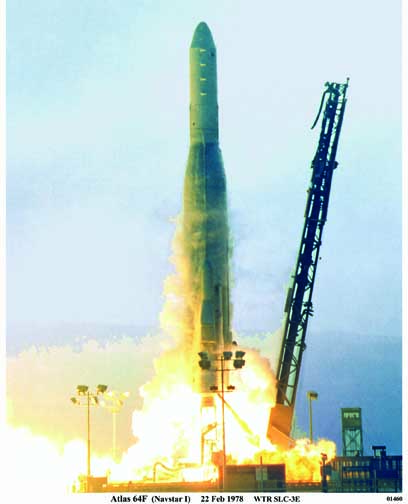
July is likely to be a key month for the GPS program’s new ground control segment as development stresses, a government watchdog report, and the budget calendar converge, potentially triggering changes to the program.
July is likely to be a key month for the GPS program’s new ground control segment as development stresses, a government watchdog report, and the budget calendar converge, potentially triggering changes to the program.
The $1.6 billion Next Generation Operational Control System (OCX) program is a critical element of the modernized GPS program. OCX is essential to fully utilizing the advanced capabilities of the upcoming GPS III satellites being developed by a team led by Lockheed Martin Space Systems Company (LMSSC). It also would add the ability to control a larger number of satellites and give the Air Force the automation it needs to be able to reallocate staff.
Perhaps most importantly OCX incorporates into its structure a cutting-edge level of information assurance (IA). Maj. Gen. Roger W. Teague, the director of Space Programs in the Office of the Assistant Secretary for Acquisition, told reporters February 6 that OCX’s cybersecurity measures were “the most hardened information assurance system ever delivered by the Department of Defense.”
The effort involved in implementing the IA portion of OCX, however, has trigged significant delays and become a source of deep frustration for the Air Force.
The Pentagon completed a “deep dive” review on February 5, a process that gave OCX program managers clear “marching orders,” Teague said following a press roundtable.
Raytheon, the OCX prime contractor that along the way changed its tagline on the program’s logo from “Always on Time” to “Transforming Signals-to-Services,” acknowledged its updated to-do list in a statement sent to Inside GNSS.
"Raytheon and the Air Force successfully completed an OCX deep dive with the DoD and Undersecretary Kendall, which resulted in alignment on the path forward with checkpoints along the way for strong execution of the remainder of the OCX program and contract,” said Matt Gilligan, the GPS-OCX Raytheon program manager, GPS-OCX.
A Raytheon spokesperson told Inside GNSS that Raytheon would be having periodic check-ins with the DoD.
Seeking Alternatives
It is now clear, however, that the Air Force is not fully confident that the OCX program will be able to meet the GPS program’s current needs. On February 11 Air Force Space Command’s Space and Missile Systems Center announced it would contract for a “Temporary Contingency Operation capability for GPS III Positioning.” The solicitation for sources issued February 11 described the move as “a risk mitigation” in the event OCX is “delayed beyond the need date for GPS III Space Vehicle 01 (SV01) to be integrated into the operational GPS constellation.”
The winning contractor is to provide temporary capability to perform the positioning, navigation and timing (PNT) mission for GPS III satellites that are being integrated into the constellation. Earlier generations of will still be operated with the existing control segment, the Architecture Evolution Program (AEP). The new contractor needs to be able to “compile, format, generate, encrypt, upload data to GPS III SVs, and monitor navigation messages in all GPS III signals.”
Although the solicitation opened the door to new companies to compete, the Air Force made it clear it believed Lockheed Martin was uniquely placed to perform this bridging task.
The source-sought solicitation states, "[The U.S. Air Force Space and Missile Systems Center (SMC) Global Positioning Systems Directorate] SMC/GP believes that, due to its unique position as the sustainer of AEP, developer and operator of the GPS III LCC, and developer of GPS III satellites, only LMSSC is capable of performing this work, in accordance with only one responsible source and no other supplies or services will satisfy agency requirements. . . ."
The question now on the table is whether new changes will take place to the contract. Sources familiar with the program, who all spoke on condition of anonymity to be able to discuss the program freely, suggested that additional delays could prompt the Air Force to look for another option for the ground system — either restructuring the program or perhaps even looking for a new contractor
Gen. Teague underscored the pressure the program and the Air Force were under during the during the budget roundtable
“We’re trying to find a balance between capability, affordability, and resiliency,” he said in reference to both OCX and the GPS III modernization effort. “On programs that aren’t executing you just can’t continue to pour money into [them].”
The Costs of Delay
The problem, explained a source, is the perception in Congress that the OCX program is overrunning its budget. If the Air Force comes back and says they are rebalancing the program, the source explained, “lawmakers are going to say, ‘Hey, you’ve done this three times; why would I believe the fourth one is going to work?’”
A decision will be driven by the need to finalize the fiscal year 2017 budget, this source said. “There’s a window now and for the next six months before the FY17 budget gets put together. They are physically going to have to make the decision at that point in time to say yay or nay.”
If a delay occurs that would push OCX past 2019, which is when the Air Force expects to transition to OCX Block 1, the source believes that the Air Force would have to revise the program and perhaps go with another contractor.
Other independent experts agreed.
“To actually cancel it is really a significant step,” however, said a source familiar with the program. “I suspect there will just be a way to try to make a hard right or a hard left and nudge it in a different direction.”
GAO Takes Another Look
Playing into the decision will be a report from the Government Accountability Office (GAO). The agency confirmed to Inside GNSS that it is working on a report on OCX, which it expected to complete by the end of July, if not earlier. GAO has previously reported on OCX.
“The [OCX] program has experienced significant requirements instability and schedule delays while in technology development,” the GAO wrote in the March 2013 edition of its annual Defense Acquisitions: Assessments of Selected Weapon Programs. “According to program officials, the first three of six software packages that provide capabilities for block 0 and 1 have been completed, but the complexity and low contractor productivity for the software development effort has proven challenging.”
In its 2014 edition of the report, GAO noted that seven of the program’s 14 critical technologies were not expected to reach full maturity until the end of fiscal year 2015 or later. OCX schedule delays, wrote the GAO, “combined with the program’s late start relative to GPS III, has resulted in considerable risk in aligning the schedules of GPS OCX and GPS III satellites.”
The mismatch between the availability of the ground system and the availability of the GPS III satellites has created a situation where the testing will not be done in time to discover problems with the satellites until it is too late to correct them, said J. Michael Gilmore, the DoD’s director of operational test and evaluation (OT&E) his FY 2014 Annual Report published in January.
“OCX Block 1 is needed to operate and support OT&E of GPS III satellites,” wrote Gilmore. “The schedule delays for OCX Block I delivery will delay OT&E of GPS III until after at least six, and as many as eight, GPS III satellites have been built and launched.”
If something were going to happen with the program, pointed out one source, now would be the time, given the ongoing budget pressures and the fact that a new secretary of defense has taken the helm.
“This is a question, I think, of who’s going to blink first,” said the first expert.





